Themed collection Molecular Medicine and Neurodegenerative Diseases

Molecular medicine and neurodegenerative diseases
Guest editors Christopher J. Chang, Benjamin F. Cravatt, Douglas S. Johnson and Mi Hee Lim introduce the Molecular medicine and neurodegenerative diseases themed issue of Chemical Society Reviews.

Chem. Soc. Rev., 2014,43, 6668-6671
https://doi.org/10.1039/C4CS90065K
Biological metals and metal-targeting compounds in major neurodegenerative diseases
Metals are functionally essential, but redistribute in neurodegenerative disease where they induce protein aggregates, catalyze radical formation, and lose bioavailability.
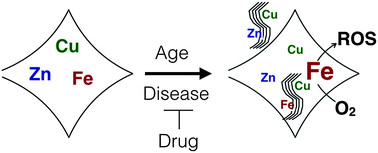
Chem. Soc. Rev., 2014,43, 6727-6749
https://doi.org/10.1039/C4CS00138A
O-GlcNAc and neurodegeneration: biochemical mechanisms and potential roles in Alzheimer's disease and beyond
Increasing levels of glucose responsive O-GlcNAcylation of proteins in Alzheimer disease mouse models decreases the toxicity of tau and Aβ.
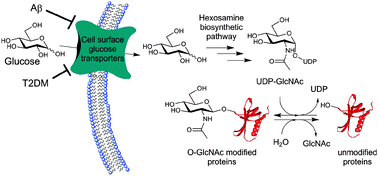
Chem. Soc. Rev., 2014,43, 6839-6858
https://doi.org/10.1039/C4CS00038B
BACE1 (β-secretase) inhibitors for the treatment of Alzheimer's disease
The review highlights the progress in the design and development of BACE1 (β-secretase) inhibitors for the treatment of Alzheimer's disease.
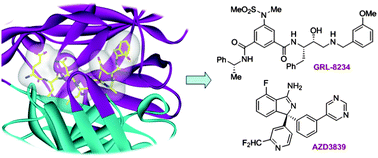
Chem. Soc. Rev., 2014,43, 6765-6813
https://doi.org/10.1039/C3CS60460H
Chemical approaches to therapeutically target the metabolism and signaling of the endocannabinoid 2-AG and eicosanoids
This review describes the development of inhibitors for endocannabinoid metabolism and their potential therapeutic benefit.
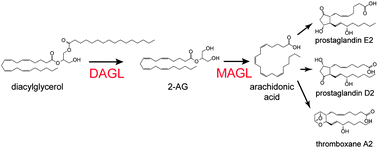
Chem. Soc. Rev., 2014,43, 6859-6869
https://doi.org/10.1039/C4CS00047A
Metal complexes designed to bind to amyloid-β for the diagnosis and treatment of Alzheimer's disease
The use radioactive copper and technetium complexes as amyloid imaging agents, the use of luminescent metal complexes as non-conventional probes of amyloid formation and the potential of metal complexes to be inhibitors of amyloid toxicity are discussed.
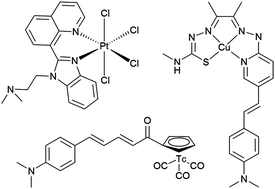
Chem. Soc. Rev., 2014,43, 6701-6715
https://doi.org/10.1039/C4CS00026A
Disordered amyloidogenic peptides may insert into the membrane and assemble into common cyclic structural motifs
Aggregation of small Aβ oligomers into common β-sheet rich annular structural motifs is responsible for Alzheimer's disease.
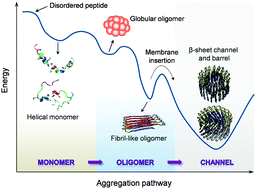
Chem. Soc. Rev., 2014,43, 6750-6764
https://doi.org/10.1039/C3CS60459D
Development of nitric oxide synthase inhibitors for neurodegeneration and neuropathic pain
Overproduction of nitric oxide by neuronal nitric oxide synthase is implicated in neurodegenerative diseases and neuropathic pain; inhibition is therapeutically desirable.
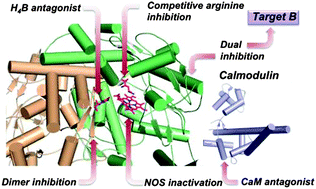
Chem. Soc. Rev., 2014,43, 6814-6838
https://doi.org/10.1039/C3CS60467E
P7C3 and an unbiased approach to drug discovery for neurodegenerative diseases
The P7C3 compounds emerged from an in vivo screen and were found to protect neurons in models of neurodegenerative disease.
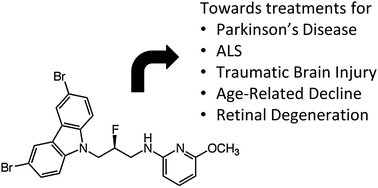
Chem. Soc. Rev., 2014,43, 6716-6726
https://doi.org/10.1039/C3CS60448A
Cholesterol and metal ions in Alzheimer's disease
This review describes the possible involvement of cholesterol and metal ions in AD neuropathogenesis in both individual and interconnected manners.
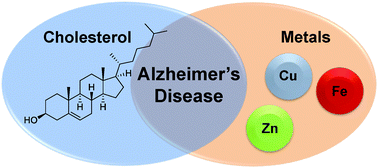
Chem. Soc. Rev., 2014,43, 6672-6682
https://doi.org/10.1039/C4CS00005F
PET/SPECT imaging agents for neurodegenerative diseases
Amyvid/PET imaging of a living brain detects β-amyloid plaque deposition, a risk factor for developing Alzheimer's disease.

Chem. Soc. Rev., 2014,43, 6683-6691
https://doi.org/10.1039/C3CS60430F
Differences between amyloid-β aggregation in solution and on the membrane: insights into elucidation of the mechanistic details of Alzheimer's disease
The association of the amyloid-β (Aβ) peptide with cellular membranes is hypothesized to be the underlying phenomenon of neurotoxicity in Alzheimer's disease.
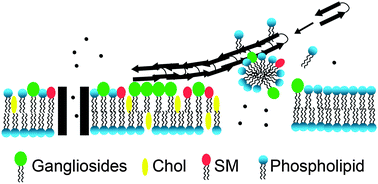
Chem. Soc. Rev., 2014,43, 6692-6700
https://doi.org/10.1039/C3CS60431D
About this collection
This Chemical Society Reviews themed issue on molecular medicine and neurodegenerative diseases was guest edited by Christopher Chang (UC Berkeley), Mi Hee Lim (University of Michigan), Benjamin Cravatt (Scripps Research Institute) and Doug Johnson (Pfizer Neuroscience). This issue will contain a series of invited reviews from prominent scientists working in all aspects of neurodegenerative disorders, including, but not limited to: diagnostics/imaging, therapeutics, drug delivery, tool or method development, mechanistic or structural studies of neurodegeneration, and pathologically relevant biological pathways and factors. New articles will be added to this collection as they are published.